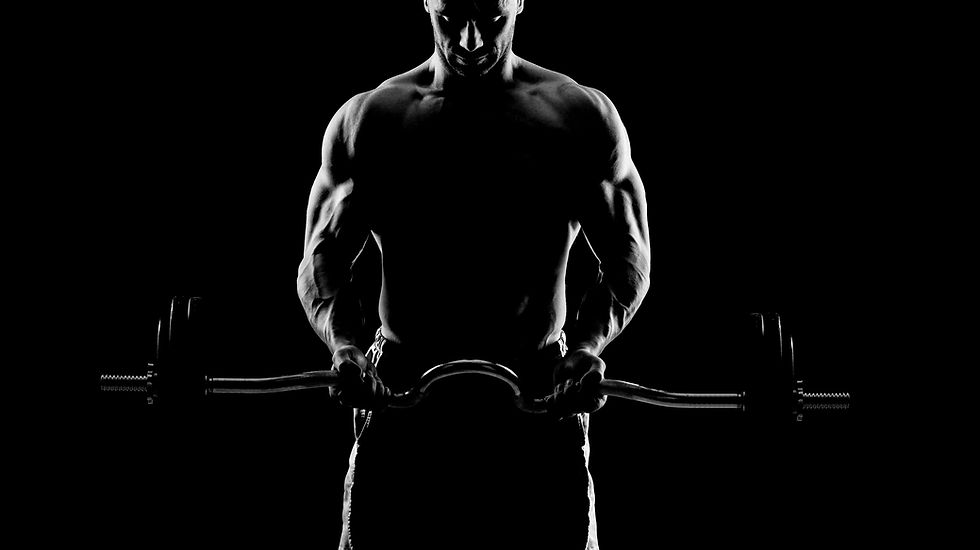What Training Split Is Right For Me?
- Tuomas Anttila
- Jul 9, 2020
- 4 min read
Does it ever feel like you're not sure if the routine you're following is the best for you?
In the health and fitness bubble, there's constant talk of what's 'optimal' and what's not. It's as if every trainee is an Olympic athlete who's programme needs to be periodised on a 4-year cycle to get them to peak for the gold medal.
Sometimes your training isn't going to be following a set structure. Sometimes you'll feel like winging things and doing things randomly. That's perfectly okay. But no doubt about it, you'll see more results in the context of your goals if you're following some sort of routine.
Now, there's a ton of programmes out there. Tons. Our goal here isn't to look at each one as that would make a university-size textbook. We'll be looking at 4 common training splits and the pros and cons of each. Under the umbrella of each split, there is a lot of flexibility to set up your routine.
5-day or 'Bro' Split
This is the entry-level programme for most people, where each day is dedicated to one specific muscle group (ie. Monday: chest, Tuesday: back, and so on). It has been hugely popular with old school and modern-day bodybuilders, and as such it holds appeal to many younger trainees who want a similar physique.
"Come, let me show you how to get a pump. Aergh."
Pros
good for bringing up weaker/lagging bodyparts due to more attention on a given day
greater exercise selection, which is good for programme variability following
high metabolic stress created from workouts, which can be good for hypertrophy
Cons
not great for beginners due to low frequency, which may hinder the skill acquisition component of the initial training phase
time-consuming
impractical for those with fluctuating schedules that may result in a missed session, which will throw off the training week
training big compound lifts may be difficult for recovery
for natural lifters, it may not be the best as muscle protein synthesis allows for muscle groups to be trained more frequently throughout the week - 7 days wait between sessions can slow down progress
Full Body
As the name implies, these sessions see you training the entire body, with some rotation in exercises throughout the week. Typically these follow a 3-4 day frequency per week.
Pros
great for beginners due to the chance to repeat workouts multiple times per week leading to improved movement IQ and strength/size gains
the non-training day between sessions can help with recovery
can be beneficial for fat loss related goals as sessions can expend more energy through utilising more muscle groups
a good way to include big compound lifts due to recoverability built into the schedule
good for those with fluctuating weekly schedules or limited time to train
Cons
may not be the best for hypertrophy as volume per body part can be lower
for very strong trainees doing big compound lifts recovery can be hindered due to session fatigue, especially in legs
smaller muscles like arms/calves may be skipped due to focus on bigger muscle groups
Upper-Lower Split
The upper-lower split is a versatile routine that is popular with intermediate to advanced trainees. Typically this is done on a 4-5 day rotation, with an even split between upper and lower sessions or an additional 5th session for either upper or lower depending on which area needs more attention.
Pros
good for introducing more exercise variation per body part
higher volume per muscle group can be good for hypertrophy
can be a good option if wanting to gain size and strength at the same time
training frequency is higher, which can benefit in bringing up lagging body parts in either strength or size
good for improving movement patterns due to higher frequency
Cons
higher frequency and less time between sessions means that recovery needs to be managed more efficiently
sessions tend to be quite taxing, which may be tough for some people
it can be hard to plan for session duration due to upper body training often taking longer than lower body training
Push, Pull, Legs
This routine is generally suitable for intermediate to advanced trainees and requires some more planning with schedule, exercise selection, and specific session focus to allow for recovery to be managed. Typically can follow an alternating weekly routine, with a different final session each week, or a longer training cycle (7-9 days) if training each session twice per training week.
Pros
can be very good for those wanting to gain strength as well as size as sessions are efficient
allows for flexible planning within a training week
allows for a moderate amount of exercise variation if alternating between different Push sessions for example within a training cycle
allows for training days to be broken up by movement pattern
Cons
can be very taxing and too much for some trainees if doing heavy compound training
may not be the most advisable routine for the athletic population as session focus too narrow (muscles that work together)
not great for beginners if they need to work on movement competency or want to build size
In summary, your training plan should take into consideration your goal (naturally), the time you have available to train, and your training age to name a few. There are more things to bear in mind of course, but this list can get you started on the path towards better programming choices.





Comments